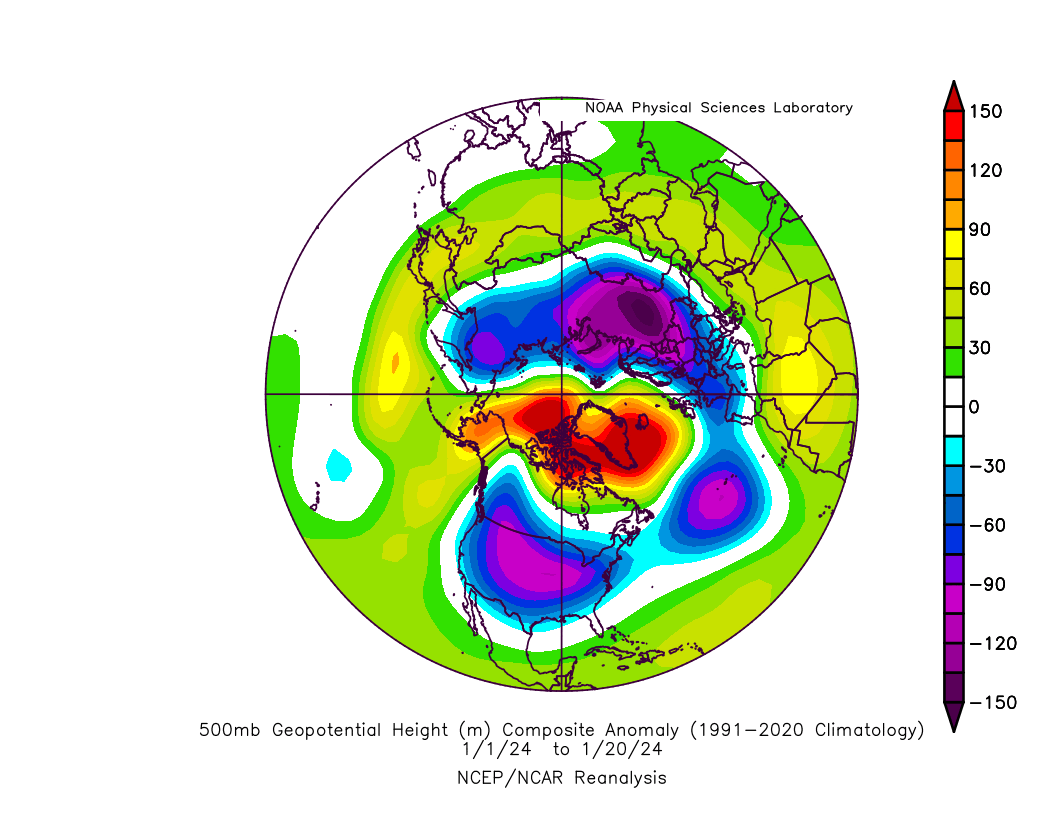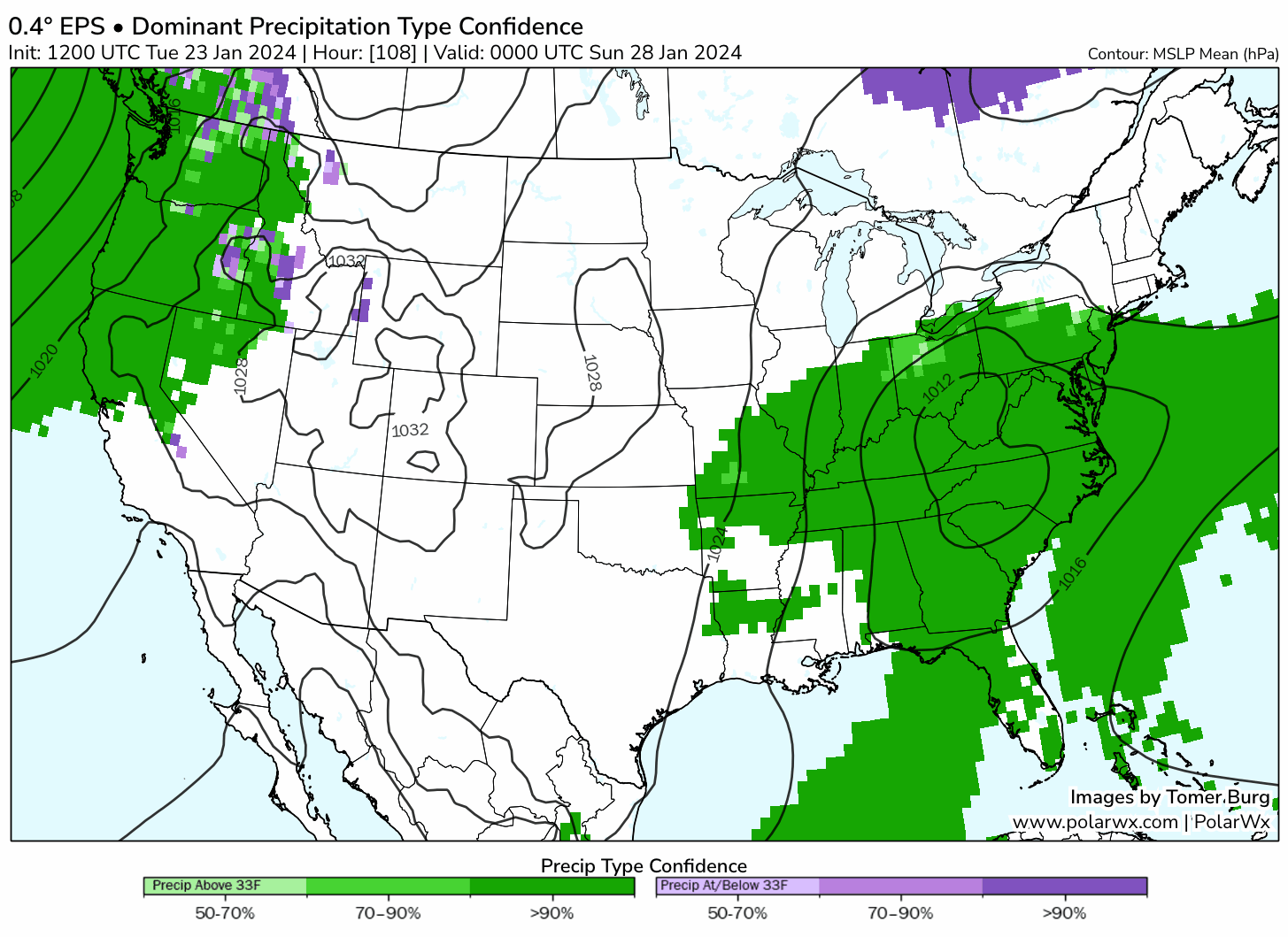For the purposes of this post, usage of terms such as "anomalously warm" is in reference to temperatures being much warmer than average. It does not necessarily mean that temperatures are actually warm, but rather in reference to temperature anomalies, unless otherwise stated that mild temperatures (here defined as generally 50°F or warmer) are possible.

500-hPa geopotential height anomalies for December 11-31, courtesy of ESRL's NCEP/NCAR reanalysis plots.

500-hPa geopotential height anomalies for January 1-20, courtesy of ESRL's NCEP/NCAR reanalysis plots.
In addition to Alaskan ridging, this allowed a lobe of the lower stratospheric/upper tropospheric vortex to cut off over Canada and become displaced towards the Hudson Bay. Such a configuration is commonly associated with major central US cold air outbreaks, and indeed this is what we saw. Relative to the last major cold outbreak, a historic one in January 2021, the southern extent was not as notable, the core of the cold was farther west as indicated by the mean trough axis leaning towards the Rockies, and the duration was shorter as well.
This configuration initially favored the Plains for major snowstorms, as a deep trough axis was centered over the southwest Rockies in addition to a Greenland ridge linking with a broad eastern US ridge. Following a transient shift to western North American ridging, the mean trough axis shifted farther east, but the waveguide became more progressive as well, resulting in only minor to locally moderate snow events in the Northeast and Mid Atlantic. January 19-20 specifically came close to being a much larger snow event, having many of the ingredients typically associated with major snowstorms, but the upstream trough was too flat, too progressive and not deep enough. From a research perspective, this may be an opportunity to run feature perturbation experiments to test just how close this came to a major snowstorm.

Map of the number of days since the last 2-inch two-day snowfall. Data courtesy of the NOHRSC snow analysis.
- Days since the last 2" snowstorm: It has been 722 days and counting since the last time Central Park recorded both a one-day and two-day cumulative 2" or greater snow total. This is a record for both metrics.
- Spatial maps: Nearly all locations north, west, south and east of NYC have had greater cumulative snowfall this winter to date. Specifically, NYC is the only major I-95 city north of Richmond to have received less than 3" of snow this winter, and among Mid Atlantic cities, both Washington DC, Baltimore and Philadelphia have received at least one 4-6 inch snow event.





